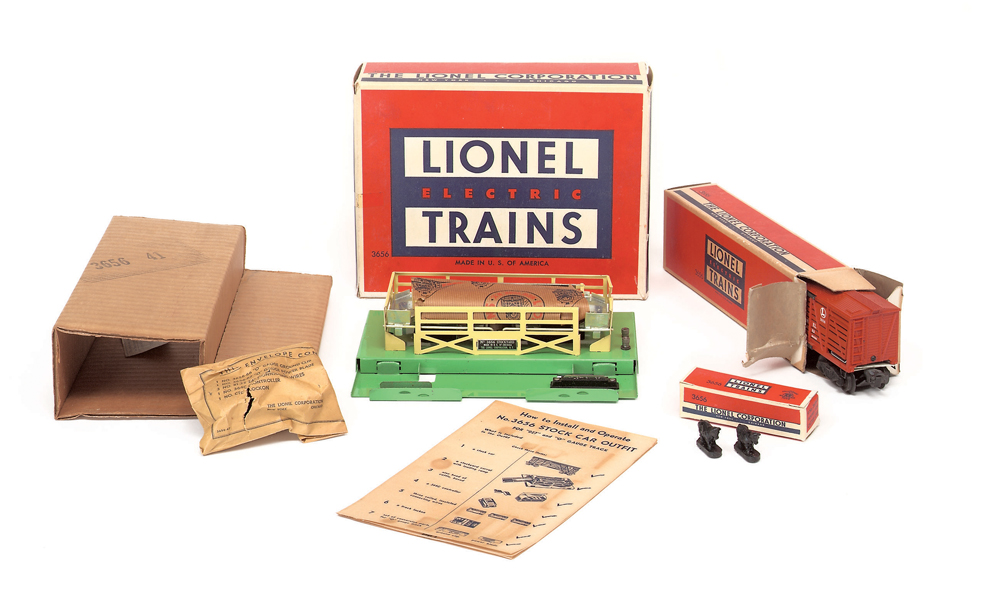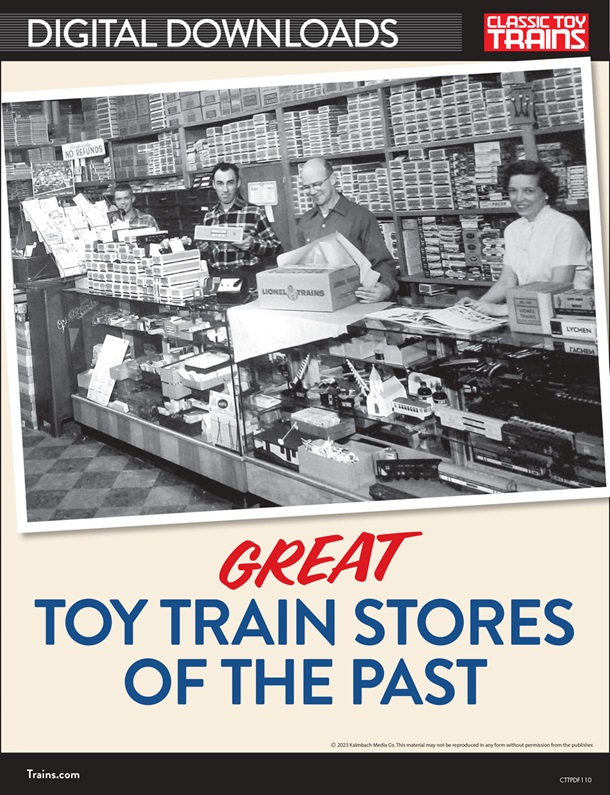I found this manuscript from the late John Grams in our manuscript files. There was no date on the envelope but it’s likely from the early 1990s. The article discusses 12 Lionel products that, while great inventions, were fraught with problems or didn’t work exactly as advertised. He included the following disclaimer:
Lionel trains were sold as toys. They were fun, fairly reliable and expensive playthings, manufactured with no thought beyond that purpose.They were not supposed to be precision scale models. That was an entirely different thing. While they were durably constructed, the trains were not intended to outlast the interest span of their young owners. No one considered them to be objects of popular art or future collectibles.
The toy business has always been a fickle one, trendy and highly competitive. J. L. Cowen not only had fine quality imports to worry about as he built his business, the domestic competition from Ives, American Flyer, and Marx must have contributed significantly to his stress. While Lionel was eventually able to absorb Ives and Flyer, Marx was still there gobbling up the low price, high volume end of the market.
The trains were not designed and produced by Santa’s helpers at the North Pole, but by flesh and blood human beings on an assembly line in New Jersey. Mistakes happened. Flaws and defects were sometimes overlooked.
I will be sharing these items over the next few weeks. I hope you enjoy them. –Rene Schweitzer, Editor of Classic Toy Trains
1945-46 roller pickups

Lionel’s first postwar knuckle coupler trucks were fragile things. A narrow rubber strip was attached to the bolster to serve as insulated support for the Bakelite coupler contact shoe and the third-rail roller pickup on illuminated cars and whistle tenders. The pickup rollers themselves were beveled and mounted on spring-loaded brackets, which hung down at about a forty-five degree angle.
Going through the curve on O-22 switches, the rollers tended to drop down and catch on the frog rail, causing a derailment. If heavier pieces, such as whistle tenders, took the switches at high speed, the rollers were often torn right out of their mountings.
Some time in 1946, Lionel redesigned the trucks completely. The new ones had metal bottom plates, with wider pickup rollers, mounted perpendicular to the track.














